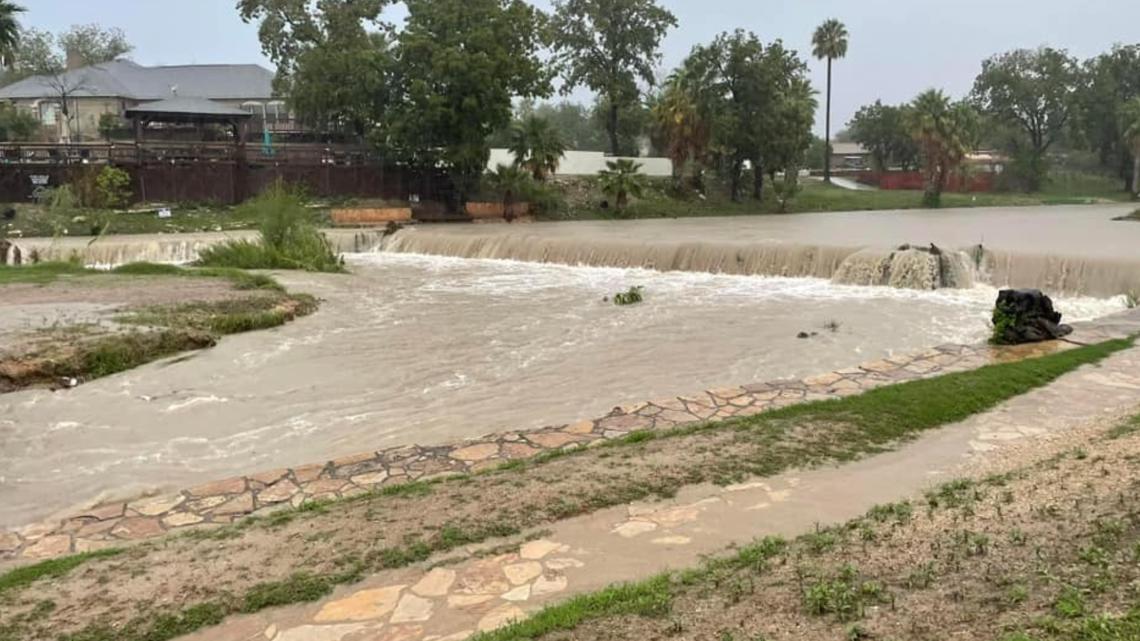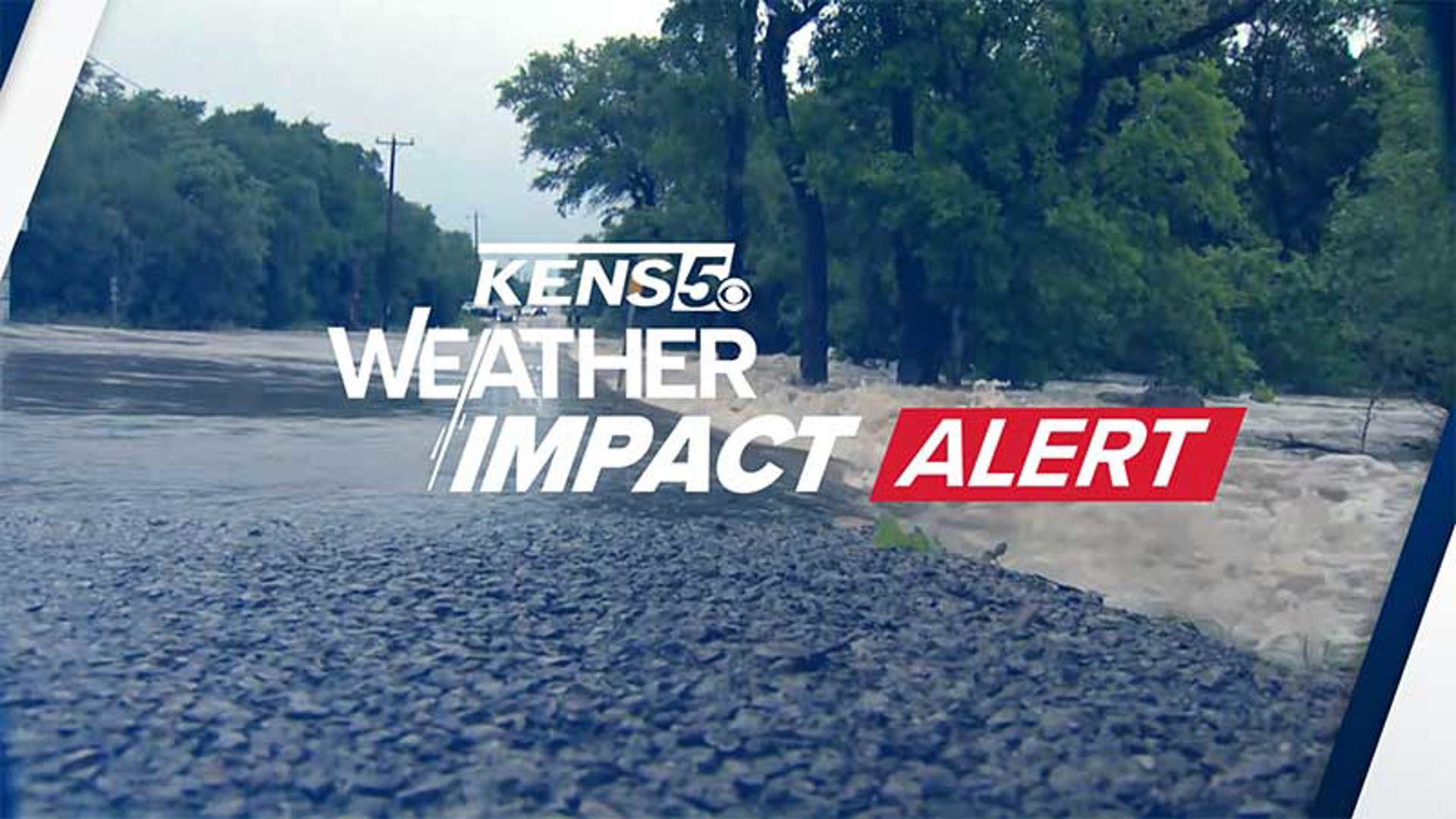SAN ANTONIO — A Weather Impact Alert Day continues to be in effect for Tuesday, Sept. 3, after the San Antonio region was drenched by morning downpours and drivers experiencing hazardous conditions on flooded roads.
The rain caused several road closures throughout the city, with about a dozen shut down at around noon. By 4:30 p.m., the number of closures had fallen to seven; check them out in the map below.
A Flood Watch remains in effect through midnight Tuesday for the Rio Grande Plains, southern Edwards Plateau and portions of the western Hill Country, though the worst of Tuesday's rain should now be behind us after some areas were expected to see up to 4 inches of rain. A Flash Flood Warning for San Antonio on Tuesday morning has expired.
Doppler radar indicated thunderstorms producing heavy rain across the warned area at 9 a.m. Flash flooding began shortly after in the Alamo City, affecting everything from major highways to neighborhood streets.
A KENS 5 viewer, John Ray Alderete, sent in this photo from the San Felipe Creek in Del Rio Tuesday morning. It shows fast-moving water through the creek from the heavy rains.


This is a developing weather event. Refresh the page for the latest updates.
SEVERE WEATHER 101
When severe weather threatens the area, it is important to know what risks a storm can bring and what you should do to stay safe.
One of the most important things to know is where you are located on a map, so when a watch or warning is put into place, you can identify if you are at risk. When the National Weather Service puts out warnings, they are county-based and sometimes include cities as well. It is important to know where you live in the county and that you can identify it on a map.
It is also important to know the difference between a watch and a warning. A watch means that conditions are favorable for something to happen, but a warning means that something has developed and it is important to take action.
So, what would cause a thunderstorm to be qualified as a "severe" thunderstorm?
Hail that is one inch large is also considered to be about the size of a quarter.
Another ingredient that would lead to a storm becoming severe is if winds are 58 mph or greater.
Winds at this strength could cause damage to roofs and could even cause trees to be knocked down.
Finally, if a tornado is present inside a thunderstorm it would qualify the storm as becoming severe.
In this instance, a tornado warning would be issued.
A tornado watch can be issued for an area if strong storms are expected, and if the storms bring the risk for tornadoes, but not all storms include the threat for tornadoes. The ingredients in the atmosphere for a tornado to form are not always there when storms are present.
If the area you are in is ever under a tornado warning, it is important to know where you should go inside your home.
Head to the lowest, interior room of your home. The basement would be best, but if you don't have one, head to the first floor of the home and get away from exterior walls, or walls that lead to the outside of the home.
It is also important to stay away from glass. The more walls you can put between you and the outside, the better.
While lightning can be frequent in storms and very dangerous, it does not lead to a storm being qualified as severe.
Remember, when thunder roars, go indoors.
Storms can also lead to flooding. Flooding may not cause a storm to be labeled as being severe, but it is the deadliest kind of weather.
South Texas is known to have major flood events every few years, so it is important to use caution and to always stay out of floodwaters. Remember, turn around, don't drown.
Entering flood water is very dangerous as you can be swept off of your feet and you don't know what could be in the water that could hurt you.
The best thing you can do to be ready for severe weather is know what you will do in the event it strikes where you live.
Make sure your family has a severe weather action plan.
Have a place everyone goes inside your home and keep supplies there, such as food, medication, batteries, and flashlights.
Follow the KENS 5 Weather Team:
Don't forget you can download the KENS 5 app for the latest news and weather information each day while you are on the go.




